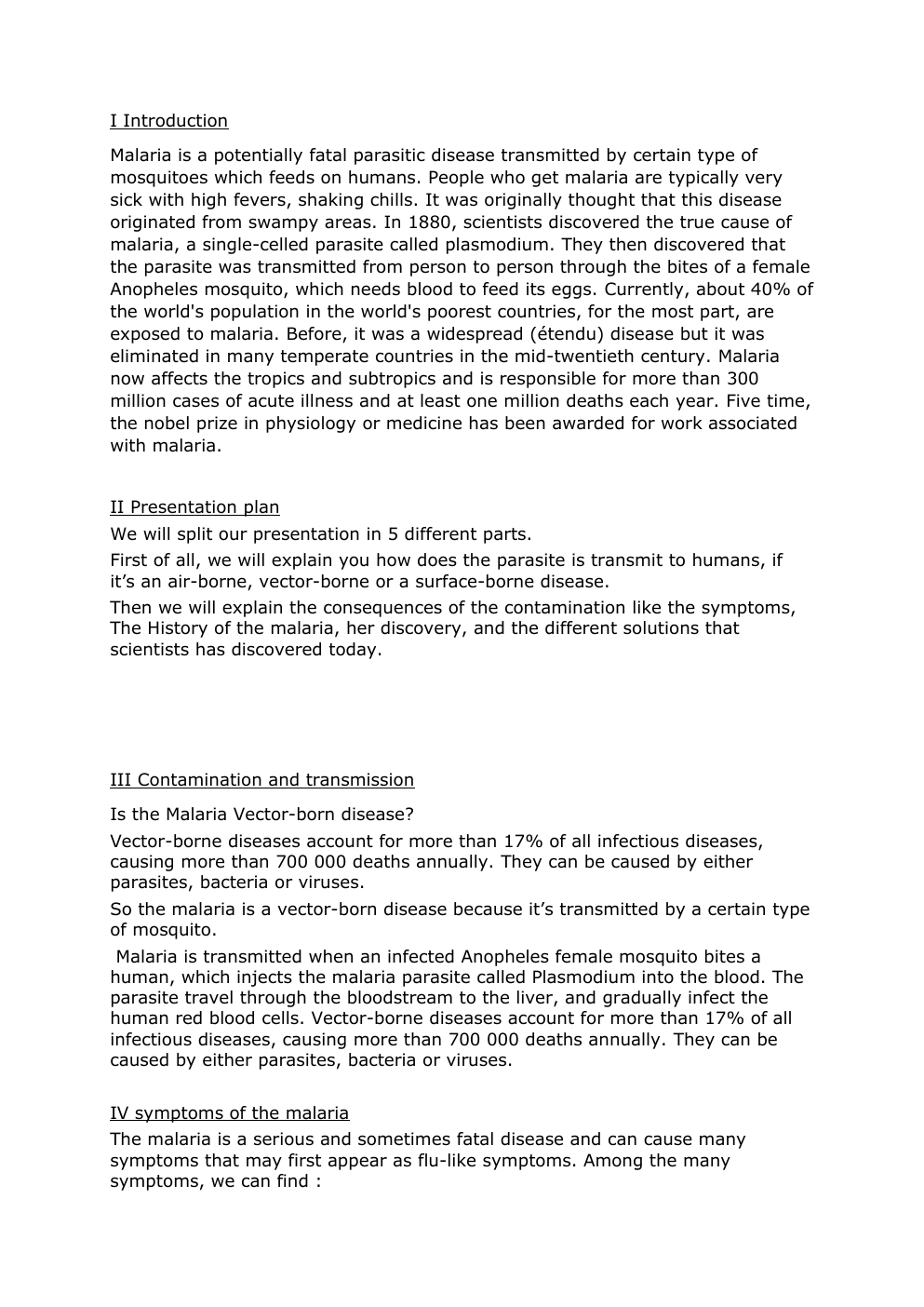exposé Malaria/paludisme
Publié le 29/05/2024
Extrait du document
«
I Introduction
Malaria is a potentially fatal parasitic disease transmitted by certain type of
mosquitoes which feeds on humans.
People who get malaria are typically very
sick with high fevers, shaking chills.
It was originally thought that this disease
originated from swampy areas.
In 1880, scientists discovered the true cause of
malaria, a single-celled parasite called plasmodium.
They then discovered that
the parasite was transmitted from person to person through the bites of a female
Anopheles mosquito, which needs blood to feed its eggs.
Currently, about 40% of
the world's population in the world's poorest countries, for the most part, are
exposed to malaria.
Before, it was a widespread (étendu) disease but it was
eliminated in many temperate countries in the mid-twentieth century.
Malaria
now affects the tropics and subtropics and is responsible for more than 300
million cases of acute illness and at least one million deaths each year.
Five time,
the nobel prize in physiology or medicine has been awarded for work associated
with malaria.
II Presentation plan
We will split our presentation in 5 different parts.
First of all, we will explain you how does the parasite is transmit to humans, if
it’s an air-borne, vector-borne or a surface-borne disease.
Then we will explain the consequences of the contamination like the symptoms,
The History of the malaria, her discovery, and the different solutions that
scientists has discovered today.
III Contamination and transmission
Is the Malaria Vector-born disease?
Vector-borne diseases account for more than 17% of all infectious diseases,
causing more than 700 000 deaths annually.
They can be caused by either
parasites, bacteria or viruses.
So the malaria is a vector-born disease because it’s transmitted by a certain type
of mosquito.
Malaria is transmitted when an infected Anopheles female mosquito bites a
human, which injects the malaria parasite called Plasmodium into the blood.
The
parasite travel through the bloodstream to the liver, and gradually infect the
human red blood cells.
Vector-borne diseases account for more than 17% of all
infectious diseases, causing more than 700 000 deaths annually.
They can be
caused by either parasites, bacteria or viruses.
IV symptoms of the malaria
The malaria is a serious and sometimes fatal disease and can cause many
symptoms that may first....
»
↓↓↓ APERÇU DU DOCUMENT ↓↓↓
Liens utiles
- Exposé Agriculture dans le monde
- exposé sur les raisons d'état et transparence: Faut-il bannir toutes formes de secret en démocratie ?
- Exposé Réchauffement Climatique
- Exposé sur Eminem
- Exposé révolution mexicaine


